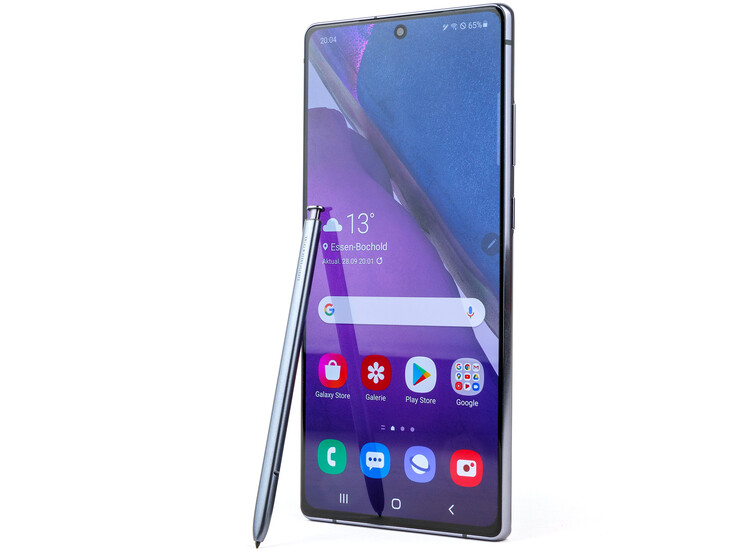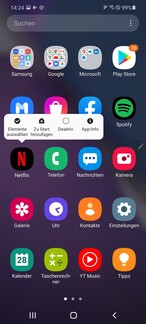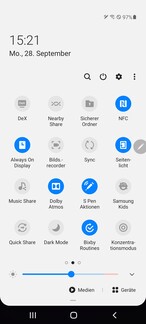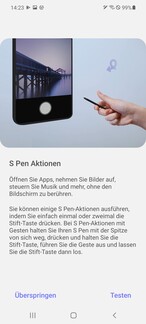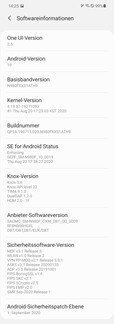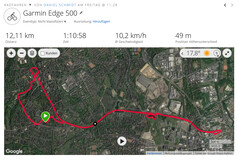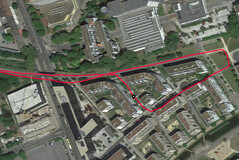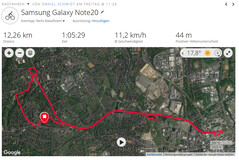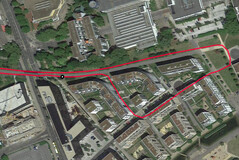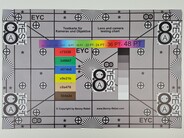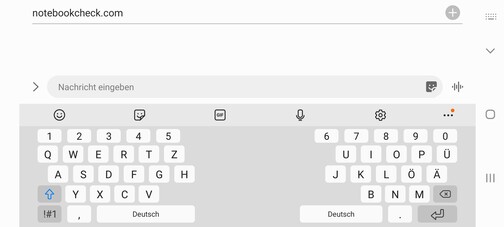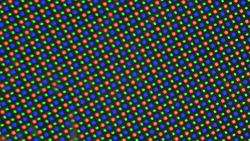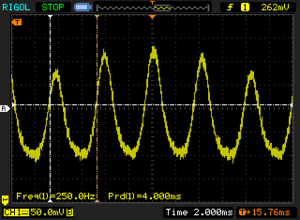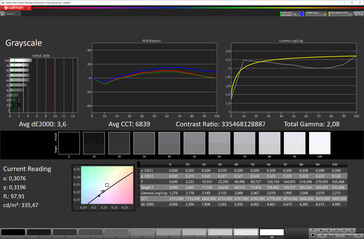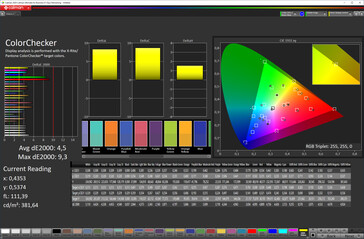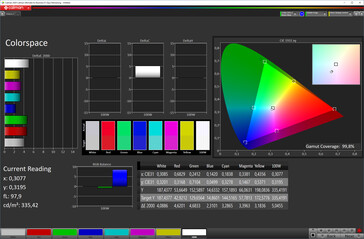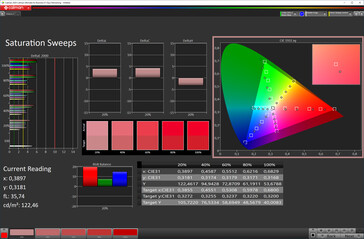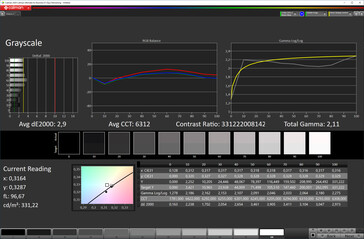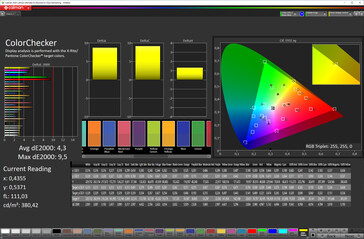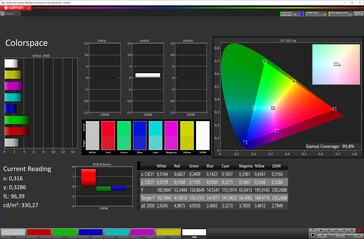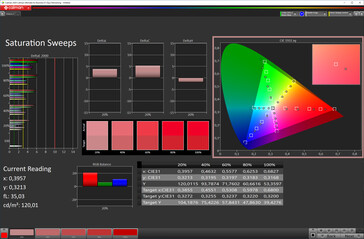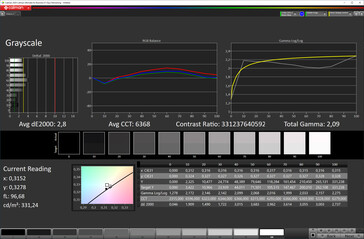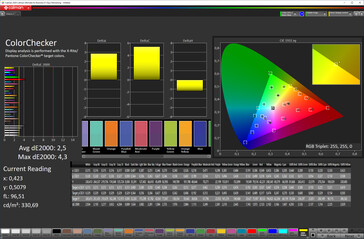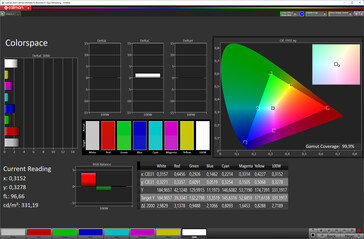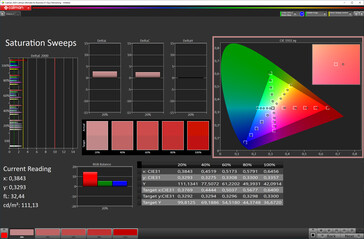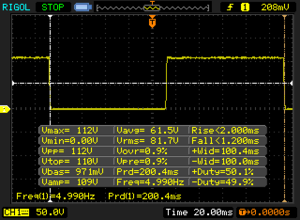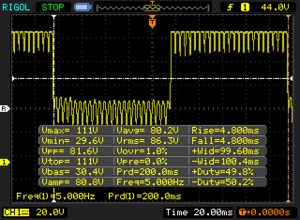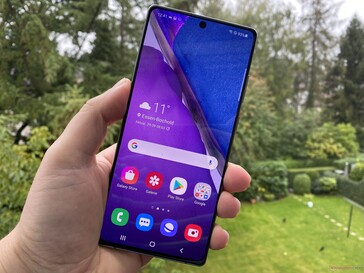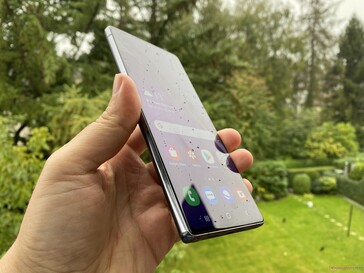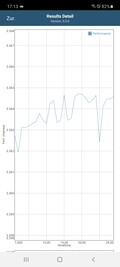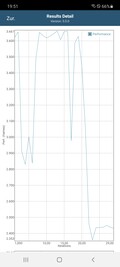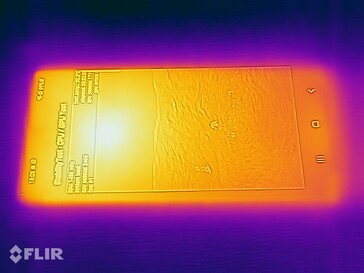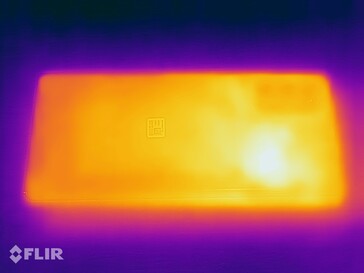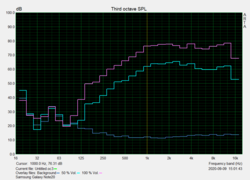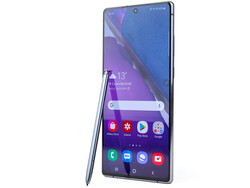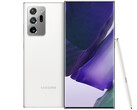Samsung Galaxy Note20 Review - Not always better than the Note10
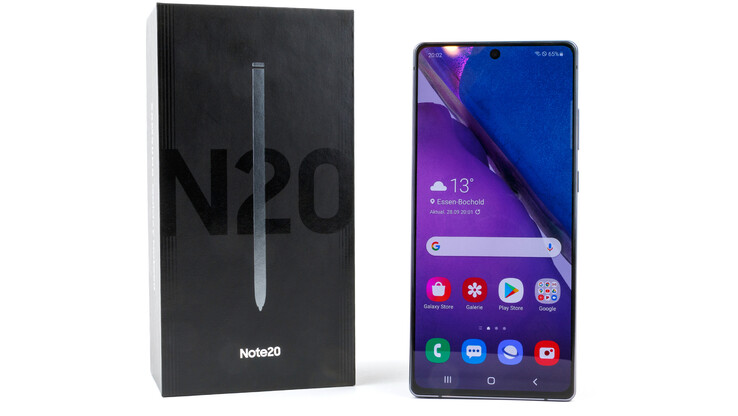
The Galaxy Note20, successor to the Galaxy Note10, is the smaller sibling to Samsung’s Note20 Ultra. Starting at $999 for the 4G model it is around $300 cheaper than the Ultra, which obviously required some compromises.
Take for example its triple camera, which instead of a 108 MP sensor features a 12 MP sensor for its main lens and lacks the optical periscope zoom. Its Super AMOLED Plus display lacks support for Dynamic OLED, which is not just a step down from the Note20 Ultra but also its own predecessor, the Note10.
Memory and storage-wise it comes equipped with a decent 8 and 256 GB. Unfortunately, higher storage tiers are not available, and the Note20 also lacks microSD support. And last but not least opting for a 5G model will incur a price premium of around $100.
Comparison Devices
Rating | Date | Model | Weight | Drive | Size | Resolution | Price |
|---|---|---|---|---|---|---|---|
| 88.1 % v7 (old) | 10 / 2020 | Samsung Galaxy Note20 Exynos 990, Mali-G77 MP11 | 192 g | 256 GB UFS 3.1 Flash | 6.70" | 2400x1080 | |
| 86.1 % v7 (old) | 03 / 2020 | Oppo Find X2 Pro SD 865, Adreno 650 | 202 g | 512 GB UFS 3.0 Flash | 6.70" | 3168x1440 | |
| 88.2 % v7 (old) | 04 / 2020 | Xiaomi Mi 10 Pro SD 865, Adreno 650 | 208 g | 256 GB UFS 3.0 Flash | 6.67" | 2340x1080 | |
| 88.5 % v7 (old) | 04 / 2020 | OnePlus 8 Pro SD 865, Adreno 650 | 199 g | 256 GB UFS 3.0 Flash | 6.78" | 3168x1440 | |
| 89 % v7 (old) | 12 / 2019 | Huawei Mate 30 Pro Kirin 990, Mali-G76 MP16 | 198 g | 256 GB UFS 3.0 Flash | 6.53" | 2400x1176 | |
| 87.1 % v7 (old) | 09 / 2019 | Apple iPhone 11 Pro Max A13 Bionic, A13 Bionic GPU | 226 g | 64 GB SSD | 6.50" | 2688x1242 | |
| 89.6 % v7 (old) | 02 / 2021 | Samsung Galaxy Note20 Ultra Exynos 990, Mali-G77 MP11 | 208 g | 256 GB UFS 3.1 Flash | 6.90" | 3088x1440 |
Case – Plastic and Gorilla Glass 5 for the Note20
The Samsung Galaxy Note20 is available in three colors: Mystic Bronze, Mystic Green, and Mystic Gray. Compared to the Note20 Ultra its rear is not made of glass but plastic with a camera bump protruding by around 0.95 mm. Accordingly, the Note20 wobbles noticeably when placed face-up on a table albeit less so than its sibling.
Build quality is superb. All gaps are narrow and consistent, and our attempts at twisting and warping the case resulted in minimal creaking at best. The rear cover can be depressed slightly. The display is flat, does not curve around the edges, and it is protected by Corning Gorilla Glass 5. Overall, the design is definitely boxier than before.
According to its spec sheet the Note20 is IP68-certified against ingress of dust and water. The SIM tray differed visually from the metal frame on our gray model, and it can take two Nano SIM cards. Like before the S-Pen is stored inside the phone albeit the slot has been relocated from the right to the left-hand side.
Connectivity – Galaxy Smartphone without microSD and Audio Jack
Connectivity is at a level expected of the device and basically unchanged when compared to the Note10.
Nominally, the device features a USB 3.2 Gen 1 port, which is nothing but a rebranding of last year’s USB 3.1 port. In addition to data and power it also carries HDMI and DisplayPort signals and can be used accordingly with the proper dongle.
Samsung DeX remains supported as well and can be used to wirelessly connect to external displays via Miracast. That said this feature has been made available via software update to the Note10 as well.
The lack of microSD port was a disappointment. Samsung also opted to not include an audio jack, an IR blaster, and FM radio.
Software – Note20 with long-time update supply
The Samsung Galaxy Note20 comes with Android 10 and Samsung’s in-house One UI 2.5 preinstalled. In addition to Samsung’s Galaxy Store we also found several third-party applications by Microsoft, Facebook, Netflix, and Spotify preloaded, some of which cannot be uninstalled but only deactivated.
The well-known S-Pen tools are preinstalled as well. Pulling out the pen from its storage compartment can start a customizable app list or notes app. Alternatively, you can still use the pen to scribble your thoughts directly onto the lock screen.
Like for its bigger sibling Samsung assures three years of updates for the Note20. It should therefore be updated all the way to Android 13, at least in theory.
Communication and GNSS – 5G optional
Our review unit may not have supported modern 5G standards, which is available as an optional extra, but it did support a very wide variety of 4G/LTE bands in return. It should thus be capable of connecting to networks when abroad. We did not encounter any connectivity issues with our review unit during the entire review period.
The Galaxy Note20’s Wi-Fi module supports Wi-Fi 6 with MIMO antennas and VHT80. When connected to our Netgear Nighthawk AX12 reference router it managed good transfer rates both ways as well as a decent signal strength and range. At -51 dBm when standing right next to the router we found its attenuation to be slightly too high, though.
Supported location services include GPS, Glonass, BeiDou, QZSS, and Galileo, all of which support dual-band mode except for the Russian and Chinese GNSS. Outdoors, location lock is obtained very quickly, and indoor accuracy was fairly high.
When taken on our usual bicycle tour around the block we pitched the Samsung Galaxy Note20 against a professional Garmin Edge 500 GPS. The total distance covered was around 7.5 miles, and the total deviation in recorded track length was 150 m. The Note20 placed us besides our actual track occasionally, which was only noticeable when inspected up close, and did a pretty good job overall.
Telephony and Call Quality
On earphone, the Galaxy Note20’s call quality was excellent. Unfortunately, voices were noticeably quieter and more muffled on speakerphone, which we would thus suggest to only use in very quiet environments.
Ambient noise was filtered out very well, and our conversational partner did not hear any interfering distractions from our side. The only effect was that our own voice was slightly more muffled.
The Note20 supports dual SIM with either two physical SIM cards or one physical SIM and one eSIM. It also supports modern communications standards such as Wi-Fi calling and VoLTE.
Cameras – Galaxy Note20 with Hybrid Tele-Zoom
The 10 MP front-facing camera produced decent photos. However, it applied too much Gaussian blur and faded the colors slightly in automatic mode.
The rear-facing triple camera consists of a 12 MP wide-angle, a 12 MP ultra-wide angle, and a 64 MP lens. The latter is used for the 3x optical / 30x digital zoom. A setup we are already familiar with from the Galaxy S20.
When used in everyday situations the Note20 produced decent photos with a high dynamic range and laser sharp focus. Truth be told we preferred its daylight photos to those taken with the Note20U. Differences started to become obvious with fading light or when zooming in, and the ultra-wide angle lens was visibly worse and suffered from blurriness around the edges.
Videos are recorded in up to 8K@30 FPS. If you prefer higher frame rates you will have to settle for 4K@60 FPS. The camera also supports a super slow-motion (960 FPS) as well as many of the other well-known features.
Image comparison
Choose a scene and navigate within the first image. One click changes the position on touchscreens. One click on the zoomed-in image opens the original in a new window. The first image shows the scaled photograph of the test device.
WeitwinkelWeitwinkelZoom (5-fach)UltraweitwinkelLow-LightUnder normalized conditions, the Galaxy Note20 produced photos that were sharp and crisp up to their very edges. Colors are more natural than on the Note20 Ultra, but the differences in low-light performance were once again glaringly obvious.
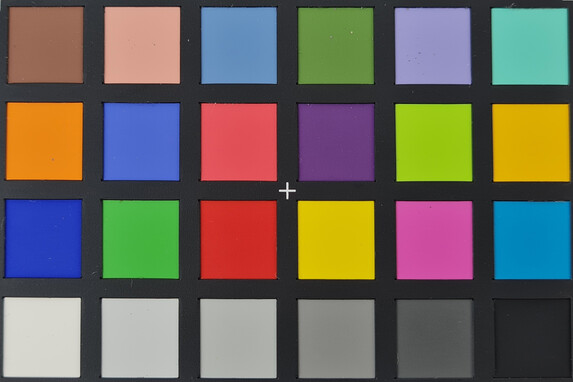

Accessories and Warranty – S-Pen without spare tips
Depending on country of purchase the Note20 comes with either 12 or 24 months of warranty, which can be further expanded through Care+. It includes two years of accidental damage protection with varying costs depending on country of purchase.
Included in the box we find a modular 25 W USB-C charger, a USB cable, a headset, a SIM tool, and the usual paperwork. As with the Ultra neither the tools required for changing nor any actual spare S-Pen tips are included.
Input Devices and Handling – Flat display and less wobble
The capacitive touchscreen is very smooth and responsive. System performance was great, but we would have wished for a higher frequency panel for an improved S-Pen responsiveness. That said we did not notice any issues or shortcomings in everyday use.
The stylus pen is identical to the Note10’s and of expected build and quality. The Note20 turned out to be better suited for taking notes due to the fact that you can use the entire width of the display due to the fact that it does not curve around the edges. The slightly lower camera bump also resulted in less wobble when the phone was placed face-up on the table.
The keyboard layout remained unchanged. It still splits in two in landscape mode for improved and easier two-handed use. Alternative layouts are available in the app stores.
Supported biometric identification includes the in-display fingerprint reader and a 2D face detection feature. Both worked great in our tests and unlocked the device very quickly.
Display – Downgrade with Benefits
The 6.7-inch large display no longer supports the current Dynamic AMOLED technology but the slightly older Super ALMOED Plus technology instead. The result is a lower maximum brightness. Nevertheless, the Note20 remains HDR10/HDR10+-certified, which when looking at its APL50 results of 833 nits should work perfectly fine. Disabling the ambient light sensor lowers maximum brightness to just 339 nits. This may sound very low at first but keep in mind that the system will continue to increase brightness in bright environments even with manual brightness control enabled and is thus capable of increasing maximum brightness to more than 339 nits.
Thanks to OLED blacks are as deep as can be. In return, users have to deal with PWM flicker typical for these panels. The Note20’s PWM frequency is between 121,4 and 250 Hz, which is fairly low and could turn out to be problematic for sensitive users.
| |||||||||||||||||||||||||
Brightness Distribution: 95 %
Center on Battery: 610 cd/m²
Contrast: ∞:1 (Black: 0 cd/m²)
ΔE ColorChecker Calman: 2.4 | ∀{0.5-29.43 Ø4.77}
ΔE Greyscale Calman: 2.8 | ∀{0.09-98 Ø5}
99.9% sRGB (Calman 2D)
Gamma: 2.09
CCT: 6368 K
| Samsung Galaxy Note20 Super AMOLED Plus, 2400x1080, 6.7" | Samsung Galaxy Note10 Dynamic AMOLED, 2280x1080, 6.3" | Samsung Galaxy Note20 Ultra Dynamic AMOLED, 3088x1440, 6.9" | Apple iPhone 11 Pro Max OLED, 2688x1242, 6.5" | Huawei Mate 30 Pro OLED, 2400x1176, 6.5" | OnePlus 8 Pro AMOLED, 3168x1440, 6.8" | Xiaomi Mi 10 Pro Super AMOLED, 2340x1080, 6.7" | Oppo Find X2 Pro AMOLED, 3168x1440, 6.7" | |
|---|---|---|---|---|---|---|---|---|
| Screen | -2% | -22% | 26% | -5% | 42% | 36% | -38% | |
| Brightness middle (cd/m²) | 610 | 764 25% | 860 41% | 790 30% | 592 -3% | 796 30% | 753 23% | 778 28% |
| Brightness (cd/m²) | 621 | 757 22% | 878 41% | 790 27% | 605 -3% | 779 25% | 762 23% | 775 25% |
| Brightness Distribution (%) | 95 | 91 -4% | 96 1% | 97 2% | 96 1% | 94 -1% | 96 1% | 99 4% |
| Black Level * (cd/m²) | ||||||||
| Colorchecker dE 2000 * | 2.4 | 2.66 -11% | 4.5 -88% | 1.4 42% | 2.5 -4% | 0.68 72% | 0.9 62% | 4.4 -83% |
| Colorchecker dE 2000 max. * | 4.3 | 5.65 -31% | 10.4 -142% | 3.4 21% | 5.5 -28% | 1.55 64% | 1.6 63% | 8.7 -102% |
| Greyscale dE 2000 * | 2.8 | 3.2 -14% | 2.4 14% | 1.9 32% | 2.6 7% | 1.1 61% | 1.5 46% | 5.6 -100% |
| Gamma | 2.09 105% | 2.073 106% | 2 110% | 2.23 99% | 2.16 102% | 2.237 98% | 2.24 98% | 2.26 97% |
| CCT | 6368 102% | 6326 103% | 6466 101% | 6466 101% | 6173 105% | 6310 103% | 6415 101% | 7250 90% |
* ... smaller is better
Screen Flickering / PWM (Pulse-Width Modulation)
| Screen flickering / PWM detected | 250 Hz | ≤ 99 % brightness setting | |
The display backlight flickers at 250 Hz (worst case, e.g., utilizing PWM) Flickering detected at a brightness setting of 99 % and below. There should be no flickering or PWM above this brightness setting. The frequency of 250 Hz is relatively low, so sensitive users will likely notice flickering and experience eyestrain at the stated brightness setting and below. In comparison: 53 % of all tested devices do not use PWM to dim the display. If PWM was detected, an average of 8081 (minimum: 5 - maximum: 343500) Hz was measured. | |||
Our CalMAN color analysis revealed that the older display technology actually outperformed the newer Dynamic AMOLED technology. When set to “Natural” colors were more accurate than on the Note10 and Note20 Ultra. Generally speaking, colors were very accurate with just minor deviations that only occurred in the smaller sRGB color space.
Display Response Times
| ↔ Response Time Black to White | ||
|---|---|---|
| 3.2 ms ... rise ↗ and fall ↘ combined | ↗ 2 ms rise | |
| ↘ 1.2 ms fall | ||
| The screen shows very fast response rates in our tests and should be very well suited for fast-paced gaming. In comparison, all tested devices range from 0.1 (minimum) to 240 (maximum) ms. » 14 % of all devices are better. This means that the measured response time is better than the average of all tested devices (20.2 ms). | ||
| ↔ Response Time 50% Grey to 80% Grey | ||
| 9.6 ms ... rise ↗ and fall ↘ combined | ↗ 4.8 ms rise | |
| ↘ 4.8 ms fall | ||
| The screen shows fast response rates in our tests and should be suited for gaming. In comparison, all tested devices range from 0.165 (minimum) to 636 (maximum) ms. » 22 % of all devices are better. This means that the measured response time is better than the average of all tested devices (31.6 ms). | ||
Performance – European Note20 with Exynos 990
The Galaxy Note20 features an Exynos 990 with 8 GB of LPDDR5 RAM and an ARM Mali-G77 MP11 GPU.
Thus, Samsung is once again using its own in-house SoC rather than Qualcomm’s top-of-the-line high-end SoC for devices sold in Europe. This is a particularly bitter pill to swallow considering the performance differences between the two.
The SoC itself is a well-known high-performance chip that we have already encountered in other 2020 flagship smartphones.
| PCMark for Android | |
| Work performance score (sort by value) | |
| Samsung Galaxy Note20 | |
| Oppo Find X2 Pro | |
| Xiaomi Mi 10 Pro | |
| OnePlus 8 Pro | |
| Huawei Mate 30 Pro | |
| Average Samsung Exynos 990 (13627 - 14760, n=5) | |
| Work 2.0 performance score (sort by value) | |
| Samsung Galaxy Note20 | |
| Oppo Find X2 Pro | |
| Xiaomi Mi 10 Pro | |
| OnePlus 8 Pro | |
| Huawei Mate 30 Pro | |
| Average Samsung Exynos 990 (10008 - 11784, n=5) | |
| AnTuTu v8 - Total Score (sort by value) | |
| Samsung Galaxy Note20 | |
| Oppo Find X2 Pro | |
| Xiaomi Mi 10 Pro | |
| OnePlus 8 Pro | |
| Huawei Mate 30 Pro | |
| Apple iPhone 11 Pro Max | |
| Average Samsung Exynos 990 (296746 - 527820, n=5) | |
| Basemark GPU 1.1 | |
| 1920x1080 Vulkan Medium Offscreen (sort by value) | |
| Huawei Mate 30 Pro | |
| Average Samsung Exynos 990 (71.4 - 71.6, n=2) | |
| Vulkan Medium Native (sort by value) | |
| Huawei Mate 30 Pro | |
| Average Samsung Exynos 990 (42.3 - 63, n=2) | |
| 1920x1080 OpenGL Medium Offscreen (sort by value) | |
| Huawei Mate 30 Pro | |
| Average Samsung Exynos 990 (84.1 - 85.6, n=2) | |
| VRMark - Amber Room (sort by value) | |
| Oppo Find X2 Pro | |
| Xiaomi Mi 10 Pro | |
| Huawei Mate 30 Pro | |
| Average Samsung Exynos 990 (4607 - 4957, n=3) | |
When browsing the web, the Note20 performed very well. Nevertheless, it landed in last place in almost all tests.
| Jetstream 2 - 2.0 Total Score | |
| Average of class Smartphone (23.8 - 387, n=147, last 2 years) | |
| Apple iPhone 11 Pro Max (Safari Mobile 13.1) | |
| Huawei Mate 30 Pro (Chrome 78) | |
| Xiaomi Mi 10 Pro (Chrome 81) | |
| Oppo Find X2 Pro (Chrome 80) | |
| OnePlus 8 Pro (Chrome 80) | |
| Samsung Galaxy Note20 (Samsung Browser 12.1) | |
| Average Samsung Exynos 990 (50.6 - 56.8, n=5) | |
| JetStream 1.1 - Total Score | |
| Apple iPhone 11 Pro Max (Safari Mobile 13.1) | |
| Huawei Mate 30 Pro (Chrome 78) | |
| Xiaomi Mi 10 Pro (Chrome 81) | |
| OnePlus 8 Pro (Chrome 80) | |
| Oppo Find X2 Pro (Chrome 80) | |
| Samsung Galaxy Note20 (Samsung Browser 12.1) | |
| Average Samsung Exynos 990 (89.3 - 96.2, n=5) | |
| Speedometer 2.0 - Result 2.0 | |
| Average of class Smartphone (15.2 - 643, n=119, last 2 years) | |
| Apple iPhone 11 Pro Max (Safari Mobile 13.1) | |
| Huawei Mate 30 Pro (Chrome 78) | |
| Oppo Find X2 Pro (Chrome 80) | |
| Xiaomi Mi 10 Pro (Chrome 81) | |
| OnePlus 8 Pro (Chome 80) | |
| Samsung Galaxy Note20 (Samsung Browser 12.1) | |
| Average Samsung Exynos 990 (50.8 - 64.4, n=4) | |
| WebXPRT 3 - Overall | |
| Apple iPhone 11 Pro Max (Safari Mobile 13.1) | |
| Average of class Smartphone (38 - 380, n=30, last 2 years) | |
| Huawei Mate 30 Pro (Chrome 78) | |
| OnePlus 8 Pro (Chrome 80) | |
| Xiaomi Mi 10 Pro (Chrome 81) | |
| Samsung Galaxy Note20 (Samsung Browser 12.1) | |
| Oppo Find X2 Pro (Chrome 80) | |
| Average Samsung Exynos 990 (86 - 102, n=5) | |
| Octane V2 - Total Score | |
| Average of class Smartphone (2228 - 126661, n=194, last 2 years) | |
| Apple iPhone 11 Pro Max (Safari Mobile 13.1) | |
| OnePlus 8 Pro (Chrome 80) | |
| Huawei Mate 30 Pro (Chrome 78) | |
| Oppo Find X2 Pro (Chrome 80) | |
| Xiaomi Mi 10 Pro (Chrome 81) | |
| Samsung Galaxy Note20 (Samsung Browser 12.1) | |
| Average Samsung Exynos 990 (18094 - 20022, n=5) | |
| Mozilla Kraken 1.1 - Total | |
| Average Samsung Exynos 990 (2294 - 2511, n=5) | |
| Samsung Galaxy Note20 (Samsung Browser 12.1) | |
| Oppo Find X2 Pro (Chrome 80) | |
| Xiaomi Mi 10 Pro (Chrome 81) | |
| Huawei Mate 30 Pro (Chrome 78) | |
| OnePlus 8 Pro (Chrome 80) | |
| Average of class Smartphone (257 - 28190, n=154, last 2 years) | |
| Apple iPhone 11 Pro Max (Safari Mobile 13.1) | |
* ... smaller is better
Out of the nominally 256 GB of storage 222 GB are accessible to the user.
In terms of performance, the UFS 3.1 storage did exceptionally well even though it was outperformed by some of its competitors since it was unable to fully utilize its high write speed potential.
| Samsung Galaxy Note20 | Samsung Galaxy Note10 | Oppo Find X2 Pro | Xiaomi Mi 10 Pro | OnePlus 8 Pro | Huawei Mate 30 Pro | Average 256 GB UFS 3.1 Flash | Average of class Smartphone | |
|---|---|---|---|---|---|---|---|---|
| AndroBench 3-5 | -15% | -7% | 10% | -6% | -6% | 33% | 66% | |
| Sequential Read 256KB (MB/s) | 1683 | 1478 -12% | 1606 -5% | 1739 3% | 1627 -3% | 1781 6% | 1757 ? 4% | 2235 ? 33% |
| Sequential Write 256KB (MB/s) | 780 | 590 -24% | 729 -7% | 750 -4% | 730 -6% | 401.8 -48% | 1204 ? 54% | 1871 ? 140% |
| Random Read 4KB (MB/s) | 207.6 | 194.2 -6% | 202.6 -2% | 264.9 28% | 208.3 0% | 226.4 9% | 287 ? 38% | 297 ? 43% |
| Random Write 4KB (MB/s) | 233.8 | 191.9 -18% | 205 -12% | 258.5 11% | 197.7 -15% | 259.2 11% | 318 ? 36% | 343 ? 47% |
Gaming – Dragged Down by the 60 Hz Display
We evaluated the Note20’s gaming performance together with our partner GameBench. High resolutions did not cause any issues at all, and the SoC was more than powerful enough to run all current games smoothly.
In PUBG Mobile we were (still) unable to select the new Ultra HD setting and encountered a noticeable frame drop in HD. In return, Armajet ran perfectly smooth at all times despite the fact that it failed to achieve a constant 60 FPS.
The Note20’s large display and good speakers make for a great gaming experience. Too bad the display is limited to just 60 Hz.
Emissions – Galaxy Smartphone with Dual Speakers
Temperature
When idle, the Galaxy Note20 remained cool to the touch. Even under sustained load it only warmed up slightly at the front.
We use the GFXBench app to determine an SoC’s thermal throttling behavior under consistent high load. Using the app’s built-in battery test, we run each benchmark scenario 30x in a row and record battery charge levels as well as frame rates. The Note20 performed very consistently in the older T-Rex test. A claim we cannot make for the newer and more demanding Manhattan test during which its performance dropped by around a third.
(+) The maximum temperature on the upper side is 35.5 °C / 96 F, compared to the average of 35.2 °C / 95 F, ranging from 21.9 to 247 °C for the class Smartphone.
(+) The bottom heats up to a maximum of 32.6 °C / 91 F, compared to the average of 34 °C / 93 F
(+) In idle usage, the average temperature for the upper side is 25.9 °C / 79 F, compared to the device average of 32.9 °C / 91 F.
Speakers
The Note20 uses two speakers, one of which is located in the earphone piece and the other at the bottom of the device. The overall soundscape and audio experience were pretty good despite the fact that lows were underrepresented.
A headphone jack is nowhere to be found, and Samsung does also not include a USB dongle. Wireless Bluetooth headphones are supported, and the Note20 can once again connect to two Bluetooth devices simultaneously. Supported audio codecs include SBC, AAC, aptX, and LDAC.
Samsung Galaxy Note20 audio analysis
(+) | speakers can play relatively loud (87.9 dB)
Bass 100 - 315 Hz
(-) | nearly no bass - on average 27.3% lower than median
(±) | linearity of bass is average (11% delta to prev. frequency)
Mids 400 - 2000 Hz
(+) | balanced mids - only 4.9% away from median
(+) | mids are linear (3.6% delta to prev. frequency)
Highs 2 - 16 kHz
(+) | balanced highs - only 1.7% away from median
(+) | highs are linear (2.9% delta to prev. frequency)
Overall 100 - 16.000 Hz
(±) | linearity of overall sound is average (15.7% difference to median)
Compared to same class
» 4% of all tested devices in this class were better, 4% similar, 92% worse
» The best had a delta of 11%, average was 35%, worst was 134%
Compared to all devices tested
» 23% of all tested devices were better, 5% similar, 72% worse
» The best had a delta of 4%, average was 24%, worst was 134%
Samsung Galaxy Note20 Ultra audio analysis
(+) | speakers can play relatively loud (88.8 dB)
Bass 100 - 315 Hz
(-) | nearly no bass - on average 22.2% lower than median
(±) | linearity of bass is average (10.7% delta to prev. frequency)
Mids 400 - 2000 Hz
(+) | balanced mids - only 4.5% away from median
(+) | mids are linear (3% delta to prev. frequency)
Highs 2 - 16 kHz
(+) | balanced highs - only 3.1% away from median
(+) | highs are linear (1.7% delta to prev. frequency)
Overall 100 - 16.000 Hz
(+) | overall sound is linear (14.7% difference to median)
Compared to same class
» 2% of all tested devices in this class were better, 2% similar, 96% worse
» The best had a delta of 11%, average was 35%, worst was 134%
Compared to all devices tested
» 19% of all tested devices were better, 4% similar, 77% worse
» The best had a delta of 4%, average was 24%, worst was 134%
Battery Life – Note20 with 4,300 mAh
Power Consumption
Despite its smaller display the Galaxy Note20 consumed more power than its larger sibling, particularly at minimum display brightness.
Using the included 25 W charger the smartphone can be charged from near empty to 100 % in 96 minutes. Alternatively, it supports wireless charging and can charge other devices via Wireless PowerShare.
| Off / Standby | |
| Idle | |
| Load |
|
Key:
min: | |
| Samsung Galaxy Note20 4300 mAh | Oppo Find X2 Pro 4260 mAh | Xiaomi Mi 10 Pro 4500 mAh | OnePlus 8 Pro 4510 mAh | Huawei Mate 30 Pro 4500 mAh | Apple iPhone 11 Pro Max 3969 mAh | Average Samsung Exynos 990 | Average of class Smartphone | |
|---|---|---|---|---|---|---|---|---|
| Power Consumption | -67% | 23% | -78% | 7% | -22% | -3% | -7% | |
| Idle Minimum * (Watt) | 0.92 | 1.47 -60% | 0.61 34% | 2.2 -139% | 0.87 5% | 0.92 -0% | 0.846 ? 8% | 0.847 ? 8% |
| Idle Average * (Watt) | 1.5 | 3.43 -129% | 1.19 21% | 3.3 -120% | 1.75 -17% | 2.9 -93% | 1.534 ? -2% | 1.446 ? 4% |
| Idle Maximum * (Watt) | 1.54 | 3.52 -129% | 1.23 20% | 3.7 -140% | 1.83 -19% | 2.94 -91% | 1.858 ? -21% | 1.63 ? -6% |
| Load Average * (Watt) | 5.49 | 6.2 -13% | 4.18 24% | 5.9 -7% | 3.85 30% | 3.65 34% | 5.14 ? 6% | 6.95 ? -27% |
| Load Maximum * (Watt) | 9.99 | 10.63 -6% | 8.53 15% | 8.3 17% | 6.64 34% | 6.18 38% | 10.7 ? -7% | 11.3 ? -13% |
* ... smaller is better
Battery Life
Thanks to its significantly larger battery the Galaxy Note20 will last longer than its predecessor, although that wasn’t true for all use cases. For example, it only outlasted the Note10 by a few minutes in our Wi-Fi test at normalized display brightness (150 nits).
All things considered the Note20 should easily last a full day for most users. As before, power users will have to look for top ups in-between.
| Samsung Galaxy Note20 4300 mAh | Samsung Galaxy Note10 3500 mAh | Samsung Galaxy Note20 Ultra 4500 mAh | Oppo Find X2 Pro 4260 mAh | Xiaomi Mi 10 Pro 4500 mAh | OnePlus 8 Pro 4510 mAh | Huawei Mate 30 Pro 4500 mAh | Apple iPhone 11 Pro Max 3969 mAh | |
|---|---|---|---|---|---|---|---|---|
| Battery runtime | -22% | -10% | 11% | -1% | 10% | 3% | 32% | |
| Reader / Idle (h) | 34.5 | 23.2 -33% | 20.4 -41% | 35.6 3% | 35.1 2% | 36.2 5% | 43.6 26% | |
| H.264 (h) | 18.7 | 13.4 -28% | 16.6 -11% | 16.2 -13% | 17.1 -9% | 18.3 -2% | 22.4 20% | |
| WiFi v1.3 (h) | 9.8 | 9.7 -1% | 10.7 9% | 10.9 11% | 14.4 47% | 15.4 57% | 13.7 40% | 15.2 55% |
| Load (h) | 5.4 | 4.1 -24% | 5.6 4% | 3.3 -39% | 4.9 -9% | 3.7 -31% | 6.8 26% |
Pros
Cons
Verdict – Better than its Reputation
When looking at the specs sheets and comparing the Note20 and Note20 Ultra side by side the former seems to require quite a few compromises to be made. For example, 5G is not available in the lower-end model and the 60 Hz display is not befitting its class. The Korean manufacturer went even further and regressed to an older display technology than on the Note20’s predecessor. Unsurprisingly, the typical tech enthusiast’s reaction was somewhere between raised eyebrows and a moderately severe heart attack. The icing on the European cake is the fact that Samsung continues to use its slower in-house SoCs for devices sold in Europe despite the fact that current Qualcomm SoCs have managed to widen the performance gap even further.
The Samsung Galaxy Note20 lacks a few features that we would have expected of a current high-end smartphone. Nevertheless, its overall concept remains very powerful and strong.
To keep things in perspective, the Galaxy Note20 remains a powerful flagship smartphone with an MSRP of less than $1,000 and a significantly lower street price. If you are looking for a powerful smartphone with S-Pen support and long-term update assurance on a budget the Note20 may be the right device for you. The flat display and smaller camera bump make working with the S-Pen so much more convenient, and if you have never experienced a display with more than 60 Hz yourself you probably won’t be missing it at all. The only real downside is the dimmer display with the added benefit of more natural colors than on the Ultra model.
Samsung Galaxy Note20
- 08/31/2022 v7 (old)
Daniel Schmidt


